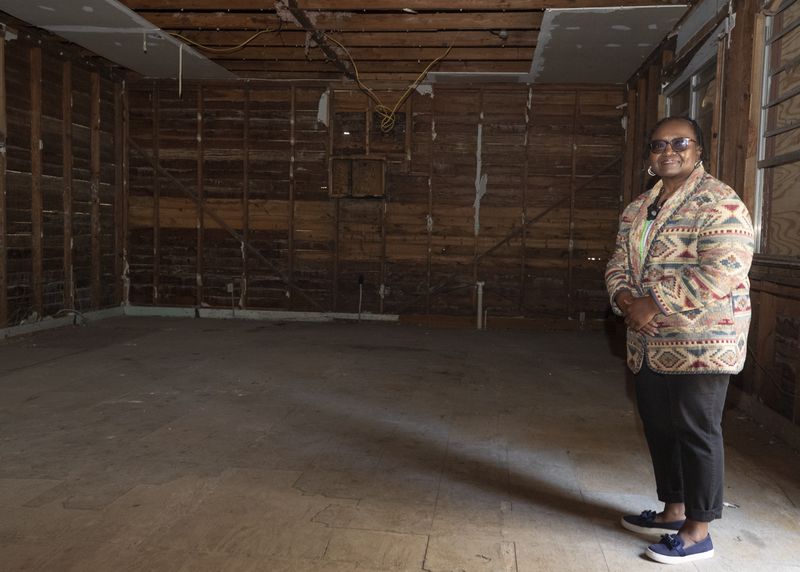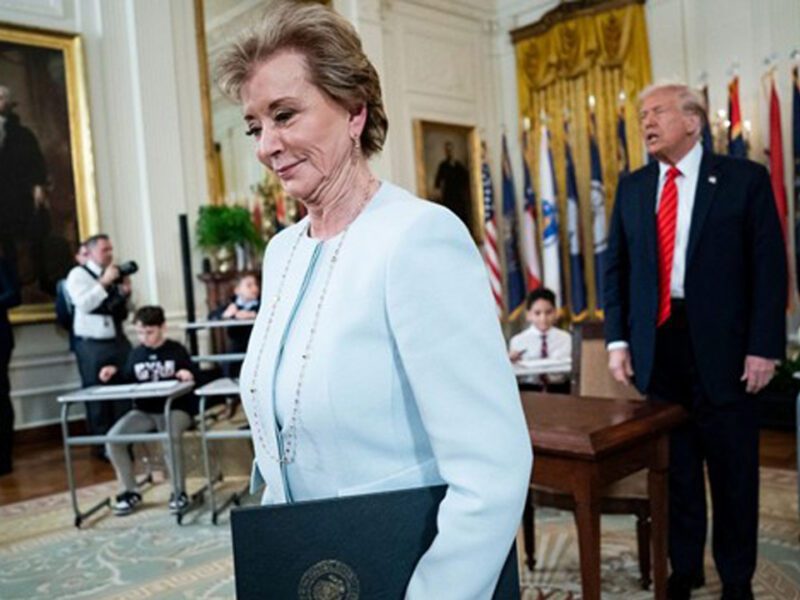91-year-old Lake school for Black children considered for National Register of Historic Places
Orlando Sentinel / Stephen Hudak / November 23, 2021
Sunlight streamed through wooden slats of the empty building where Harriet Hawkins Livingston, 74, learned to read and write long ago.
There were no desks or blackboards inside, no books, nothing but memories.
“At one time it was the only education we could get,” Livingston said.
She is part of a community group hoping to preserve the former two-room schoolhouse in central Lake County.
Once known as the Okahumpka Colored School, the building south of Leesburg was among 5,300 “Rosenwald” schools erected across the segregated South from 1913 to 1932 to help educate Black youths like Livingston, barred by Jim Crow laws from attending class with white children.
The structures were built by Jewish businessman and philanthropist Julius Rosenwald, who donated $30 million from the fortune he made as part-owner of Sears, Roebuck & Co., and Black leader Booker T. Washington, who was born into slavery but championed education as the path to a better life.
After Washington’s death in 1915, Rosenwald established a fund “for the well-being of Mankind” to continue his friend’s vision.
Black Americans also contributed $4.8 million to fund 127 Rosenwald schools in Florida, 10 in Lake County.
According to the National Trust for Historic Preservation, by 1928, one in three Black youths in the South attended Rosenwald schools.
Alumni of Rosenwald schools include American poet and civil-rights activist Maya Angelou, who died in 2014, and American statesman John Lewis, who served 17 terms in Congress representing Georgia. Lewis, who died in 2020, earned distinction in 1965 when he led the first of three Selma to Montgomery marches across the Edmund Pettus Bridge where peaceful demonstrators were attacked by a white deputized mob.
Just 23 Rosenwald schools remain standing today in Florida, two in Lake County — the other is in Mount Dora.
“It’s not just Okahumpka history, it’s American history,” said Charles Fields of the Okhaumpka Community Club addressing Lake County commissioners last month. “The schools had a profound, exponential impact generationally speaking upon the lives of numerous Americans throughout the South.”
The club has cared for the school since 1970 when the Lake County School Board transferred the property to the group.
The Okahumpka school closed in 1960.
Completed in 1930, the 1,500 square-foot school building was included on the Florida Trust for Historic Preservation’s 2021 list of “11 to Save,” a compilation of historically significant but endangered places, and was recently nominated for inclusion on the National Register of Historic Places.
Lake County commissioners pledged their support for the recognition last month.
The Okahumpka club dedicated a historic marker on the school site Nov. 13 and attendees included descendants of Julius Rosenwald.
A GoFundMe campaign created by the club’s fund-raising chairman Chip D’Amico, a retired police officer, seeks to raise $75,000 to restore the building for use as a community center in the former Black enclave where residents labored in citrus groves, on watermelon farms and making turpentine.
The club also is applying for an African-American Cultural and Historical Grant to preserve and restore the school, D’Amico said.
The state grant could provide up to $500,000 without matching funds.
D’Amico said the club hopes to restore the school and build a modern community center behind it.
The former school has been used occasionally as a center for distributing meals to home-bound adults.
The Florida Department of State’s historical division called the building the state’s best existing example of a wood-frame, two-teacher school.
Its address was formerly 3615 North Quarters Road, a street name common in areas where slaves and formerly enslaved Blacks lived.
The building’s address is now 27908 Virgil Hawkins Circle, named for Livingston’s uncle, an iconic figure in Florida’s civil rights movement.
Virgil Hawkins’ parents donated a half-acre of land for the school in May 1930.
While Hawkins never attended the Okahumpka Rosenwald school, he studied in a ramshackle building torn down to make way for the school.
That’s close enough for his niece, Livingston.
“We just have a bond with that building,” Livingston said of her family.
Her uncle helped pry open doors to graduate programs for Blacks through his long, unsuccessful struggle to get into law school at the University of Florida. UF’s College of Law denied admission to Hawkins and five other eligible Black applicants in May 1949, solely based on race.
A graduate of Bethune-Cookman College in Daytona Beach, Hawkins appealed to the Florida Supreme Court, where he cited the “equal protection clause” of the 14th Amendment that mandates individuals in similar situations be treated equally by the law. But his challenge did not prevail.
The state’s high court instead required Florida to build a law school for Black students at Florida A&M University.
The UF law school has a web page dedicated to Hawkins, though he never attended classes there.
According to the web page, the U.S. Supreme Court’s landmark 1954 decision Brown v. Board of Education ordered desegregation of public schools nationwide with ‘all deliberate speed’ by 1956 and, in a companion decision, the high court also ordered UF to admit Hawkins to its law school.
UF still refused to admit him, forcing him to go before the Florida Supreme Court three more times and the U.S. Supreme Court twice more.
In 1965, Hawkins earned a law degree from the New England School of Law in Boston, but the school was not accredited, the reason Florida officials cited for refusing to let Hawkins take the state bar exam. Eleven years later, the Florida Supreme Court decided Hawkins had been unfairly treated and should be given a license to practice — without taking the test. He finally opened his own practice in Leesburg at the age of 70.
He died in 1988 at age 81






